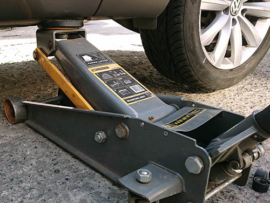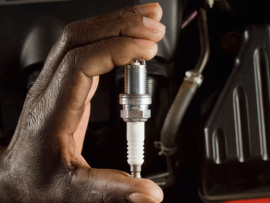- 1. P0012 Code – A Camshaft Position – Timing Over-Retarded Bank 1
- 2. Causes of OBD-II Code P0012
- 3. Symptoms for OBD-II Code P0012
- 4. Fixes for P0012 Code
- 5. Conclusion
- 6. Common Questions
- 7. How complicated is diagnosing of P0012 Code?
- 8. Can I continue driving with the P0012 code?
- 9. How is the code P0012 serious?
P0012 Code – A Camshaft Position – Timing Over-Retarded Bank 1
DTC P0012 is a diagnostic trouble code that is related to the engine’s variable valve timing (VVT) system. The code indicates that there is an issue with the camshaft position timing for bank 1, which is typically the intake camshaft. This can result in poor engine performance, reduced fuel efficiency, and increased emissions. The root cause of the problem can be varied, but it’s often related to issues with the VVT system’s oil control valve, camshaft position sensor, or timing chain/belt.
Causes of OBD-II Code P0012
DTC P0012 is typically caused by a malfunction in the engine’s variable valve timing (VVT) system, specifically related to the camshaft position timing on bank 1, which is usually the intake camshaft. The exact cause can vary, but common culprits include:
- Faulty Camshaft Position Sensor: A defective or failing camshaft position sensor can provide inaccurate readings to the engine control module (ECM), leading to timing issues and triggering the P0012 code.
- Malfunctioning Oil Control Valve: The VVT system relies on the oil control valve to regulate oil flow to the camshaft actuators, which control the timing of the valves. A malfunctioning oil control valve can disrupt the timing, resulting in the P0012 code.
- Timing Chain/Belt Issues: A stretched, damaged, or improperly tensioned timing chain or belt can affect the synchronization between the camshaft and crankshaft, leading to timing problems and the appearance of the P0012 code.
- Engine Oil Problems: Insufficient or contaminated engine oil can hinder the smooth operation of the VVT system. Sludge buildup, low oil pressure, or using the wrong type of oil can contribute to timing irregularities and trigger the P0012 code.
It’s important to note that these are general causes, and specific vehicles may have unique factors that contribute to the appearance of the P0012 code. Proper diagnostics and troubleshooting are necessary to pinpoint the exact cause in each individual case.
Symptoms for OBD-II Code P0012
The symptoms of P0012 OBD-II error code can vary depending on the severity of the issue and the specific vehicle. Some common symptoms associated with this diagnostic trouble code include:
- Check Engine Light: The illumination of the check engine light is a common indicator of a problem. When the P0012 code is detected, the check engine light will typically come on and remain illuminated until the issue is resolved.
- Engine Performance Issues: You may experience poor engine performance, such as reduced power, hesitation, or sluggish acceleration. The engine may feel less responsive or struggle to maintain consistent power output.
- Rough Idle: The engine may exhibit an irregular or rough idle, where it may idle at higher or lower than normal RPMs. You may notice fluctuations in engine speed or vibrations felt through the vehicle.
- Increased Fuel Consumption: A malfunction in the variable valve timing system can disrupt the combustion process, leading to inefficient fuel burning. This can result in increased fuel consumption, requiring more frequent refueling.
- Engine Noise: In some cases, you may hear abnormal engine noises, such as ticking, rattling, or knocking sounds. These noises can occur due to the timing irregularities caused by the malfunctioning VVT system.
Note: It’s important to note that these symptoms can be associated with various engine-related issues, and a comprehensive diagnosis is necessary to determine if DTC P0012 is the root cause.
Fixes for P0012 Code
Fixing a P0012 diagnostic trouble code (DTC) involves addressing the underlying issue that is causing the code to be triggered. The specific fix will depend on the root cause of the problem, which is typically related to the variable valve timing (VVT) system. Here are some potential fixes for a P0012 DTC:
- Inspect and Replace Camshaft Position Actuator: The camshaft position actuator controls the timing of the camshaft in relation to the crankshaft. If the actuator is faulty or stuck, it can cause the P0012 code. In such cases, inspecting the actuator for any damage or blockages and replacing it if necessary may resolve the issue.
- Check and Clean Oil Control Valve: The oil control valve regulates the flow of oil to the VVT system. Over time, it can become clogged with debris or experience electrical issues, leading to improper VVT operation and triggering the P0012 code. Cleaning or replacing the oil control valve can often rectify the problem.
- Verify and Adjust Timing Chain Tension: A loose or worn timing chain can affect the synchronization between the camshaft and crankshaft, resulting in improper VVT operation and the P0012 code. Verifying the condition of the timing chain and adjusting its tension, or replacing it if necessary, can help resolve the issue.
- Check Engine Oil Level and Quality: Low oil level or poor-quality oil can impact the proper functioning of the VVT system, leading to code P0012. Ensuring the engine oil is at the correct level and using the recommended oil grade can contribute to resolving the problem.
- Address Wiring or Connector Issues: Faulty wiring connections, damaged harnesses, or loose connectors can disrupt the communication between the VVT components and the engine control module (ECM), triggering the P0012 code. Inspecting the wiring and connectors for any damage or loose connections and repairing or replacing them can help rectify the issue.
Conclusion
It’s important to note that these are general potential fixes, and the specific solution may vary depending on the vehicle make, model, and engine configuration. Additionally, diagnosing and repairing a P0012 DTC often requires the expertise of a qualified mechanic or technician who can accurately identify the root cause and apply the appropriate fix.
Common Questions
How complicated is diagnosing of P0012 Code?
Diagnosing a P0012 code typically involves these general steps:
- Read the Code: Use an OBD-II scanner or diagnostic tool to retrieve the P0012 code from the vehicle’s onboard computer.
- Inspect Wiring and Connectors: Check the wiring harness and connectors related to the camshaft position sensor, variable valve timing (VVT) solenoid, and associated components. Look for any signs of damage, loose connections, or corrosion that could affect the electrical signals.
- Check Oil Level and Quality: Inspect the engine oil level and quality. Low or dirty oil can affect the operation of the VVT system and trigger the P0012 code. Ensure that the oil meets the manufacturer’s specifications.
- Test Camshaft Position Sensor: Use a multimeter to test the camshaft position sensor’s electrical signals. Measure the voltage or resistance according to the manufacturer’s specifications. A faulty sensor could be causing the code.
- Check VVT Solenoid: Inspect the VVT solenoid or actuator responsible for controlling the camshaft timing. Test its electrical connections and verify proper operation using manufacturer-recommended testing procedures.
- Verify Timing Components: Examine the timing components, such as the timing chain or belt, tensioners, and guides. A worn or improperly installed timing component can cause the camshaft timing to be out of sync, triggering the P0012 code.
- Check Engine Control Module (ECM): The ECM controls the VVT system’s operation based on input from various sensors. Perform diagnostic tests on the ECM to ensure it is functioning correctly and sending the appropriate commands to the VVT system.
- Consult Technical Resources: Consult vehicle-specific technical manuals, service bulletins, or online resources to gather additional information on common issues, known fixes, or specific diagnostic procedures related to the P0012 code.
- Repair or Replace Faulty Components: Based on the diagnostic findings, repair or replace any faulty components identified during the inspection and testing process. This may involve replacing sensors, solenoids, wiring, or performing repairs on the timing system.
- Clear the Code and Test Drive: After the repairs, clear the DTC from the ECM using the diagnostic tool. Take the vehicle for a test drive to ensure the code does not return and that the engine operates properly.
It’s important to note that the complexity of diagnosing a P0012 DTC can vary depending on the specific vehicle make, model, and engine configuration. If you are unsure or do not have the necessary knowledge and tools, it is recommended to seek assistance from a qualified mechanic or technician.
Can I continue driving with the P0012 code?
Continuing to drive with a P0012 code is generally not recommended. Continuing to drive with the code present can lead to potential engine misfires, loss of power, and even engine stalling.
How is the code P0012 serious?
The P0012 code is considered a moderately serious diagnostic trouble code (DTC) that should be addressed promptly. While it may not indicate an immediate critical issue, ignoring or neglecting the code can lead to more severe problems over time.
The engine may experience rough idling, hesitation during acceleration, and a noticeable decrease in overall performance. In some cases, the engine may even stall or fail to start. Extended driving with this code can also put additional stress on engine components.
We do an efforts to find, research and recommend the best products. So, we may receive commissions from purchases that you make after following the links in our product reviews.







